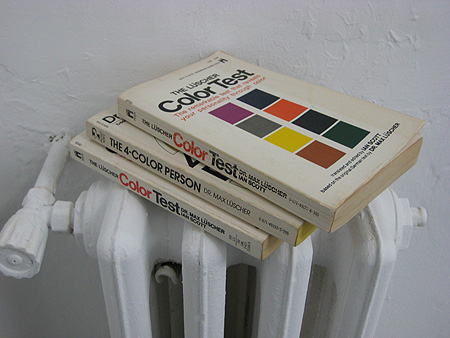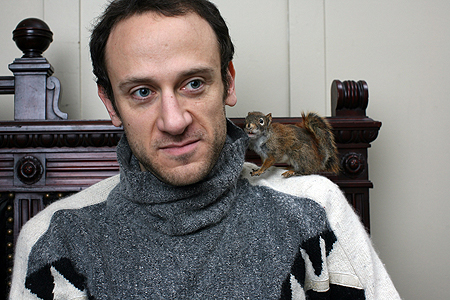
Reaching the bookshelves wasn’t easy. Her sense of will returned only after a stretch of time having been lost in the universes of Stephen Hawking, which was itself preceded by a period submerged in the sound of slide-guitars. When Luz explained that, her situation, I pressed the rim of my coffee cup onto my lips. It was a reflex, to keep my jaw from dropping, to refrain from voicing any kind of expression. True, my eyelashes may have fanned from bewilderment, but I kept silent. Luz was serious. She said: To Hawking, I owe gaining a sense of perspective, to music, a regained pleasure for immaterial indulgence. She actually felt indebted, which, to me, at this day and age, that just meant being a common person. To her, it meant slipping out from solitude. She felt at a loss, and reparation lied in comprehension.
I hadn’t seen Luz since last autumn, when tree leaves were one of several things changing color and falling out around her. Seasons change, fortunately. We were at Finn’s today, sitting at its outdoor terrace, enjoying the shade of its Tupelo. It was late in the morning, and our table was surrounded by those of overly-caffeinated people, whose eyes seemed to open wider at every syllable pronounced in their chatter. In comparison to their agitation, our conversation developed in slow motion, with lengthy silences between lines that couldn’t just be filled with pithy insights or common interjections, for we didn’t need to pretend transitions. Not that ours was a special kind of conversation and the others’ a babble. It was in fact a typical talk at Finn’s, to the extent that, like the rest there, Luz and I had our share of adventures, and we were meeting to see where they took us—to talk about where we were, in general.
You may have actually been there, at that neighborhood café. You may know, then, that Luz had voiced a while back that she wanted to have no regrets; that, and to not regress along the way; to not repress nor assume a blank-slate in the process; that these were the personal goals she had set out to reach; that not knowing how to go about it, she recurred to literature; that I, from afar, accompanied her in the reading, partly out of empathy and partly because of experiencing spare, winter nights and long commutes. You may already know all what I am typing here, whether because you were eavesdropping on us this morning, or, quite simply, because you’ve experienced a similar situation to Luz’s. You may also know, then, that Luz and I were friends, even if I understood her far less than she understood me, even if I grasped regret far less than she.
*
Regret is an emotion masked with hypothetical inquiry. It can have the appearance of thought; worse, of thoughtfulness; of critical consciousness. It’s not. While its arrival may be prefaced by philosophy’s what ifs that spark an exploration of becoming, regret instead menaces with a state of being. It’s a puncturing un-exhaled breath. It tightens the heart. A trip on a time machine gone eerie, regret entangles past, present and future. It’s all times experienced indistinctly in a single instance, sensed in synchronicity. With such time constraint, distance breaks down. It perils reason. Regret is ingrained to broken illusions, even if it may seem founded on the potentiality of dreams. It’s life at once felt and unlived. It aches in one’s muscles. It affects, and far from caringly. This is how Luz experienced regret. How she described it. And it was not a feeling she was at ease with.
Regret had been a new sentiment percolating in her life, since her break-up last summer. Maybe regret had presented itself before. If so, Luz was probably as oblivious to it as she was insensible to the events that led to her separation. Acknowledging all this was complicated. Unburdening from regret was even more trying. Sure, Luz had a religious upbringing; catechism had insisted in the value of forgiving. Yet none of its lessons had dealt with regret; if there had been any sessions of such kind, these were clearly unmemorable. And sure, Luz had been privately coursed on identifying life’s turning points and missed opportunities, as well as in recognizing the significance of forgetting, the heft of shame, and the dexterity of pleasure, whether this was at church confessionals, psychoanalyst couches, or bourgeoisie cafés. But little did those exchanges address how to actually deal with that dreadful sentiment that is regret.
I asked her: What about guilt? Luz had thought about it, and didn’t hesitate in sharing her conclusions, which were tentative, she assured me. This is where she stood on the topic thus far: While guilt and regret are both culturally relative emotions, and can feel similarly, their source and course differ. Guilt is rooted in the temporal terms of morality; regret is implicated in the spatial notions of subjectivity. Guilt is perceived to be seeded by an external force; regret seems to be concocted by an internal mechanism. Whereby guilt is imposed, socially instituted, regret is contrived, self-constitutive. In any case, the fact is that she noticed the symptoms of regret, not of guilt, and it was simply nauseating.
Perhaps someone else has a more hopeful take on regret. Maybe you. Luz clearly didn’t, in spite of being generally optimistic. This ostensible attitude of hers isn’t transpiring between these lines, I gather, less so with that word choice: spite. I even notice a twinge in my fingertips at typing this word, all of them. Regardless of that, or precisely because of it, I’ve found how regret has been productive. It’s a sentiment much played out as the crux or floating signifier of sorts in a slew of novels, films, political discourse, you name it. Have also found how it’s been generative. It’s regret, again, what those various forms of narrative could instill; what would seem to be elicited at their experience. In these musings, I’ve wondered if regret is in itself an intended predicament of the culture industry. Have even made up a pop-theory of such complot. I shared it with Luz. She was unamused. As true as that could be, holding accountable an industry to such a feeling only displaced the problem, distracted her from the life-course she wanted to take.
(more…)




